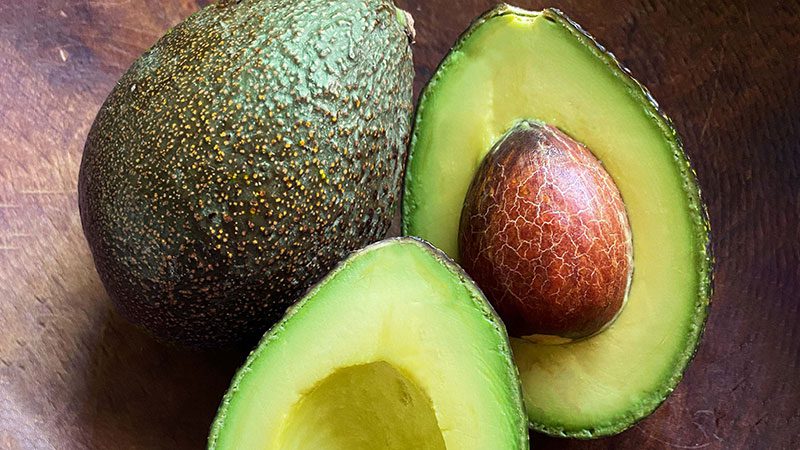Little-known GEM avocado is hitting the big time
This article was originally published in May 2022

Avocados aren’t usually labeled by variety in stores, for good reason. One type of the fruit, the pebble-skinned Hass avocado, accounts for the majority of avocadoes eaten in the U.S.
Watch now for a newcomer: The GEM avocado, a hefty, rich variety with a gold-flecked peel, is growing in popularity and newly available in PCC stores this year. The variety was developed through traditional crossbreeding techniques in the 1980s by a University of California researcher (Gray E. Martin – it’s named for his initials), but distributors said this is the first year it’s been grown in large enough quantities to market commercially. The California Avocado Commission estimated the GEM would make up about 1.6% of the state’s avocado crop in 2022, double the percentage of the 2021 crop (about 95% of the rest is Hass.)
Organic GEMs are in even shorter supply; PCC is believed to be the only West Coast retailer carrying them in stores. By current estimates they’ll be available through the end of June.
The GEM is even more of a rarity considering that the bulk of avocadoes eaten in the U.S. come from Mexico, which grows about 80% of the U.S. supply, according to the National Agricultural Statistics Service. (California produces most of the rest.)
GEMs are gaining more attention for several reasons, according to staff and growers at The Del Rey Avocado Co. and Organically Grown Company, who are, respectively, supplier and distributor of PCC’s GEMs.
For farmers, the advantages are practical: The trees are more compact than typical Hass trees, and they require less water. Growers can plant them more densely, and can water, maintain and harvest them more efficiently. The fruits are sizable, and they grow within the tree’s canopy, helping shelter them from sun damage.
Indications are that the trees can withstand temperatures 5 to 10 degrees hotter than other varieties and can also better tolerate cold, a serious benefit in an age of climate change and unpredictable temperature fluctuations
From the eater’s perspective, there’s the buttery nutty flavor, the thick, pretty peel that’s easier to remove than thinner ones, and a good shelf life (good for an avocado, that is — Del Rey growers say they appear to stay longer in the “sweet spot” of ripe but not rotten.)
Expect to see more GEMs in future years. Avocado trees generally lose productivity and are replaced after 35 to 40 years, and a sizable number of California’s trees are at that point, according to Del Rey. Its specialists expect to see the GEM acreage triple or quadruple over the next few years, and to see organic growers rise from a few individuals to match the Hass figures of about 10% of the crop.
